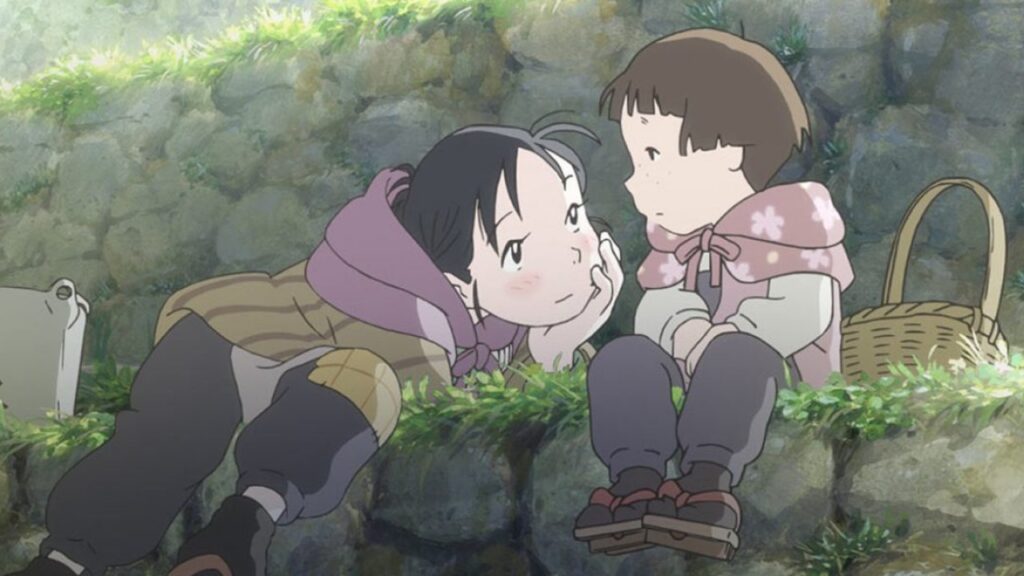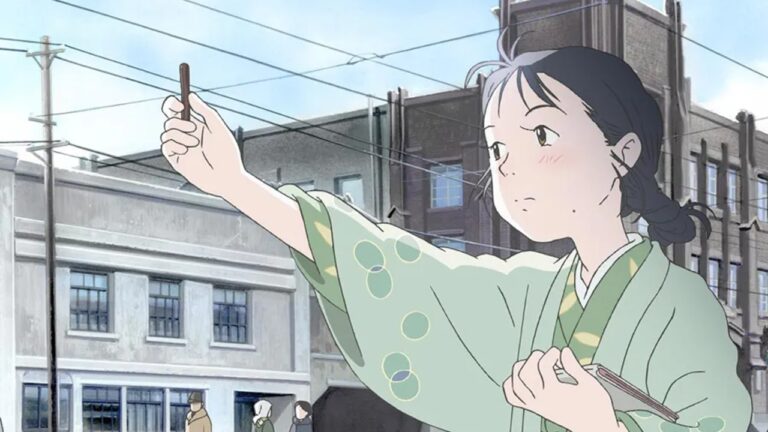Warning: This article contains major spoilers for ‘In This Corner of the World.’
There are films that entertain us, and there are films that make us stop and reflect on the fragility of being alive. ‘In This Corner of the World,’ released in 2016, belongs to the latter. Directed and co-written by Sunao Katabuchi and produced by MAPPA, it brings to life Fumiyo Kōno’s story through delicate animation, gentle music by Kotringo, and character designs by Hidenori Matsubara.
The film may be animated, but every frame feels rooted in truth, drawn from extensive research into the landscapes and memories of pre-war Hiroshima. Its extended version, In This Corner of the World, released in 2019, even became the longest theatrical animated film ever made, yet its heart lies in the smallest of human moments.
How Small Moments of Joy Endure in the Shadow of War

Set in the 1930s and 1940s, the film follows Suzu, a young woman from Eba near Hiroshima. She is gentle, distracted, and fond of drawing. Through her eyes, we see Japan before the war tightens its grip. Her world is full of daily routines, small joys, and the natural beauty of her seaside town. These quiet beginnings make the later events feel more devastating because we understand what was lost.
In 1943, Suzu marries Shusaku, a naval clerk from Kure, and joins his family. Their life together is modest but steady. As the war grows harsher, rationing begins, and the air raid sirens become familiar. Suzu takes on the duties of a housewife, managing supplies and helping neighbors through her Tonarigumi. Yet within these tasks, she keeps her sense of wonder. She sketches, cooks, and finds meaning in small acts of care. Through Suzu, we see how ordinary people carried the burden of survival.
Her moments with her niece Harumi bring lightness into the film. But the war closes in. When Tetsu, Suzu’s childhood friend, visits before returning to sea, his quiet confession of love contrasts with the certainty of death that hovers over them. Shusaku’s quiet acceptance of this meeting reveals the understated humanity of the story. Love here is not about romance or possession but about endurance and empathy.
There were silent cells that were said to go off at any given moment. When bomb shells drop, some don’t blast immediately, but get triggered even due to small moments. That tragedy engulfed Suzu’s life and led to her collapse. She loses her right hand and Harumi in a fraction of a second. The colors fade, and time slows. Her grief is not dramatized at all. It sits quietly in her silence and hesitation, and as we see, she stops drawing. Her sense of self seems to dissolve.
The Hiroshima bombing is not shown through spectacle but through distance, a bright light, a tremor, silence. Suzu and her family see the towering cloud from afar and only later learn what it meant. This choice makes the horror more personal. We are left, like Suzu, piecing together the loss through news, rumors, and absence. When she discovers her hometown destroyed and her family gone, the pain feels quiet but endless.
The Quiet Rebirth After Unthinkable Loss

After the war ends, Suzu hears the Emperor’s voice announcing surrender. The world that demanded obedience now asks her to rebuild. American soldiers arrive, distributing food to starving citizens, and life begins again, awkwardly and uncertainly. Suzu visits her sister Sumi, who is weak from radiation sickness. The film never tries to give us a sense of closure because history did not give one to the people who lived through it. Yet it gives us moments of grace.
Suzu and Shusaku adopt an orphaned girl whom they found after the gruesome events of Hiroshima. The clip of the orphaned girl captures the tragedy that has left many sobbing. We see her half-alive mother guided her through the ruins of bombing, and eventually she succumbs to her injuries and dies, while her daughter is left stranded before she is found. Through this act, we see the faintest spark of renewal. The final scenes show that Keiko, who is still grieving Harumi’s death, pulls out some of her daughter’s clothes, hoping they would fit the girl they adopted. Eventually, it ends by showing that Suzu is teaching the girl to sew, her left hand guiding what remains of her right, and turning small pieces of cloth into something whole.
What remains after the film ends is not closure but reflection. It reminds us that survival is not only about enduring war but about rebuilding meaning when everything seems lost. Suzu’s quiet strength and her will to keep creating become symbols of resilience. The film leaves us with a question rather than an answer. What does it mean to find hope in the ruins? Perhaps that question itself is the point, and it stays with us long after the final image fades.




